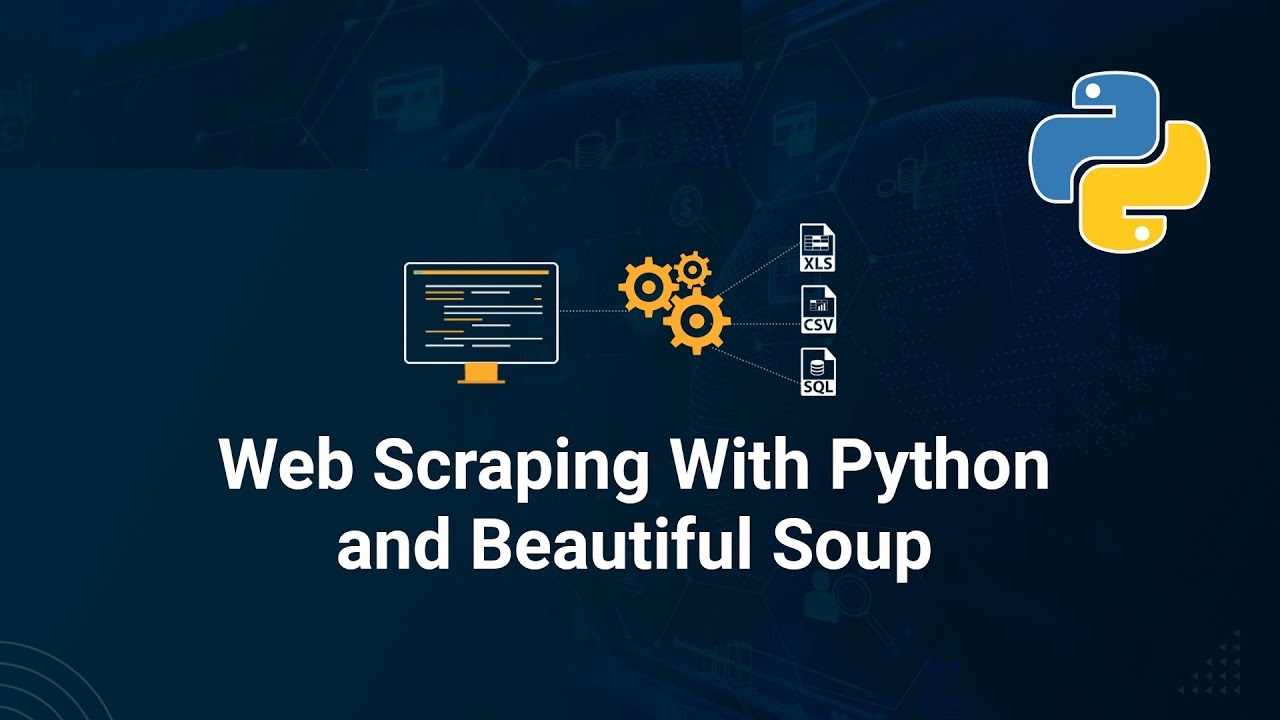Web scraping is the process of extracting useful information from websites by programmatically reading their HTML or XML content.
Python, a versatile and powerful programming language, has become a popular choice for web scraping due to its simplicity, readability, and extensive library support.
In this blog, we will delve into the world of web scraping with Python, focusing on two popular libraries: Beautiful Soup and Selenium.
So, buckle up and let’s dive right in!
Web Scraping Basics
Web scraping typically involves two main steps:
- Sending an HTTP request to a URL (Uniform Resource Locator) and downloading the HTML content.
- Parsing the downloaded HTML content to extract the relevant information.
Python has several libraries that make these tasks straightforward. For this article, we will focus on Beautiful Soup and Selenium.
Installing the Required Libraries:
To get started, you will need to install Beautiful Soup, Selenium, and their dependencies. You can install them using pip:
pip install beautifulsoup4
pip install selenium
Additionally, you will need a web driver for Selenium. You can download the appropriate driver for your browser from the following links:
Introduction to Beautiful Soup:
Beautiful Soup is a library that makes it easy to parse and navigate HTML and XML content. It sits on top of an HTML or XML parser and provides Pythonic idioms for iterating, searching, and modifying the parse tree.
To use Beautiful Soup, you first need to import it and make an HTTP request to download the HTML content. You can use the requests library for this:
import requests
from bs4 import BeautifulSoup
url = 'https://example.com'
response = requests.get(url)
soup = BeautifulSoup(response.text, 'html.parser')
Beautiful Soup Code Examples:
Here are some code examples showcasing Beautiful Soup’s capabilities:
Extract all links from a webpage:
links = soup.find_all('a')
for link in links:
print(link.get('href'))
Extract all text inside a specific HTML tag:
paragraphs = soup.find_all('p')
for paragraph in paragraphs:
print(paragraph.text)
Extract content based on CSS classes or IDs:
# Find elements with a specific CSS class
items = soup.find_all(class_='item')
for item in items:
print(item.text)
# Find an element with a specific ID
element = soup.find(id='my_id')
print(element.text)
Introduction to Selenium:
Selenium is a powerful library for automating web browsers. While Beautiful Soup is excellent for static content, Selenium is better suited for handling dynamic content loaded via JavaScript.
Selenium requires a web driver, which allows it to interact with browsers like Chrome, Firefox, and Edge.
To use Selenium, you first need to import it and create a WebDriver instance:
from selenium import webdriver
# Replace with the path to your webdriver executable
driver_path = '/path/to/chromedriver'
options = webdriver.ChromeOptions()
options.add_argument('--headless') # Run browser in headless mode (optional)
driver = webdriver.Chrome(executable_path=driver_path, options=options)
Selenium Code Examples:
Here are some code examples showcasing Selenium’s capabilities:
Load a webpage and extract the page title:
url = 'https://example.com'
driver.get(url)
print(driver.title)Extract all links from a webpage:
links = driver.find_elements_by_tag_name('a')
for link in links:
print(link.get_attribute('href'))
Interact with webpage elements (e.g., fill out a form and submit it):
# Fill out a text input field
text_field = driver.find_element_by_id('username')
text_field.send_keys('my_username')
# Click a button
submit_button = driver.find_element_by_id('submit')
submit_button.click()
# Wait for the page to load after submitting the form
from selenium.webdriver.support.ui import WebDriverWait
from selenium.webdriver.support import expected_conditions as EC
from selenium.webdriver.common.by import By
wait = WebDriverWait(driver, 10) # Wait up to 10 seconds
element = wait.until(EC.presence_of_element_located((By.ID, 'result')))
print(element.text)
Take a screenshot of a webpage:
driver.get('https://example.com')
driver.save_screenshot('screenshot.png')
Summary
In this article, we explored web scraping using Python, Beautiful Soup, and Selenium.
Beautiful Soup is an excellent choice for parsing static HTML content, while Selenium is perfect for handling dynamic content loaded via JavaScript.
By combining these powerful libraries, you can efficiently extract data from websites and automate browser interactions.
Keep in mind that web scraping might violate the terms of service of some websites. Always check a website’s robots.txt file and follow the specified rules.
Additionally, respect the website’s server resources and avoid overwhelming them with too many requests in a short period.
Happy web scraping!
Thank you for reading our blog, we hope you found the information provided helpful and informative. We invite you to follow and share this blog with your colleagues and friends if you found it useful.
Share your thoughts and ideas in the comments below. To get in touch with us, please send an email to dataspaceconsulting@gmail.com or contactus@dataspacein.com.
You can also visit our website – DataspaceAI



